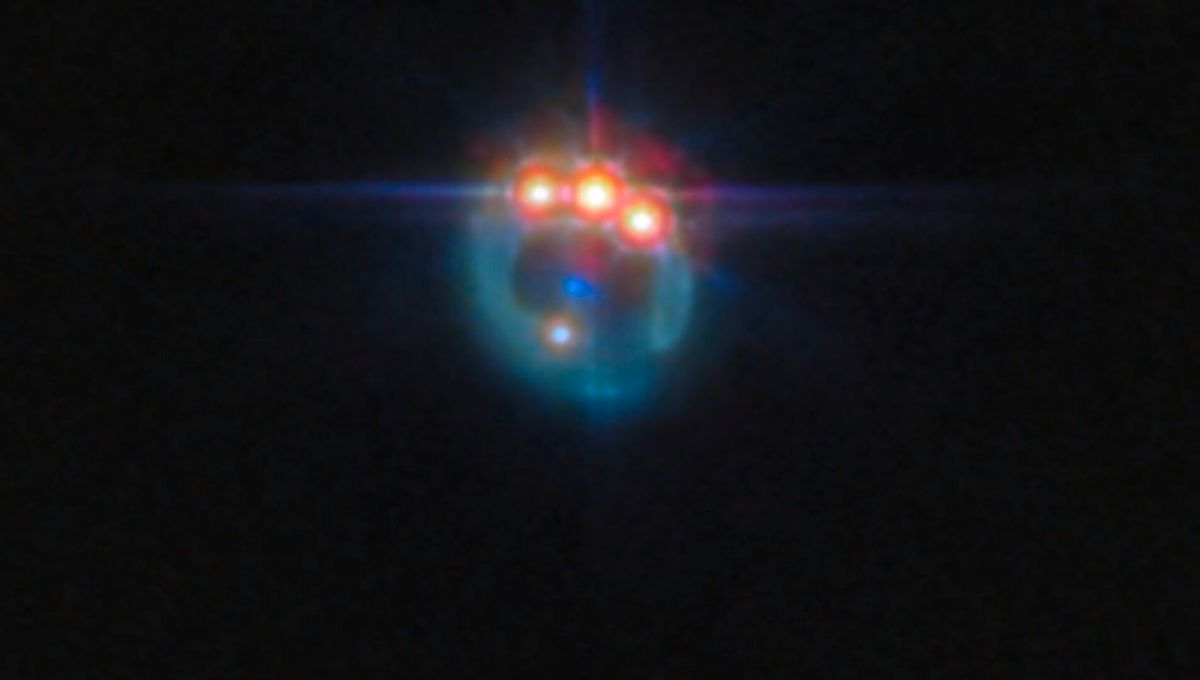
Glistening like a celestial engagement ring deep in outer space, this stunning new image shows a quasar located roughly six billion light-years away from Earth.
Quasars are the super-bright and energetic centers of distant galaxies powered by supermassive black holes. They are among the most powerful objects in the universe, beaming out the equivalent energy of hundreds of billions of stars combined.
The quasar featured in this particular image is RX J1131-1231, located in the constellation Crater. Its portrait was recently captured by the JWST – the most powerful and most complex telescope ever launched into space – with the aid of gravitational lensing, a phenomenon predicted by Einstein’s General Theory of Relativity and the space-time continuum.
The phenomenon explains how light from a distant object is bent and magnified by the gravitational field of a massive object, like a galaxy cluster or black hole, as it travels toward an observer. It’s a pretty handy effect for astronomers as it can help to magnify distant astronomical objects that would be otherwise too faint to observe.
Bear in mind, though, that it also creates distortions, duplicates, or rings (known as Einstein rings) of the background object. For instance, in this new image, the three very bright spots you see at the top of the ring are actually a single quasar that has been duplicated by the gravitational lens.
Observing the X-ray emissions from quasars can reveal the rotational speed of their central black holes and provide some insights into their backstory. When black holes primarily grow through galactic collisions and mergers, they tend to gather material into a stable disc, leading to a rapid spin. On the other hand, when they gather size through numerous smaller events results, the material accumulates from varied directions and produces a slower spin.
In the case of this image, the black hole is spinning at more than half the speed of light, suggesting it grew through mergers rather than several influxes of material from different directions.
Studying quasars also helps to deepen our understanding of dark matter, the elusive and invisible form of matter that makes up most of the Universe’s mass. This latest image was shot with JWST’s MIRI (Mid-Infrared Instrument), which ESA explains is “allowing astronomers to probe the nature of dark matter at smaller scales than ever before.”
Source Link: Quasar Shines Like A Celestial Engagement Ring In New JWST Image